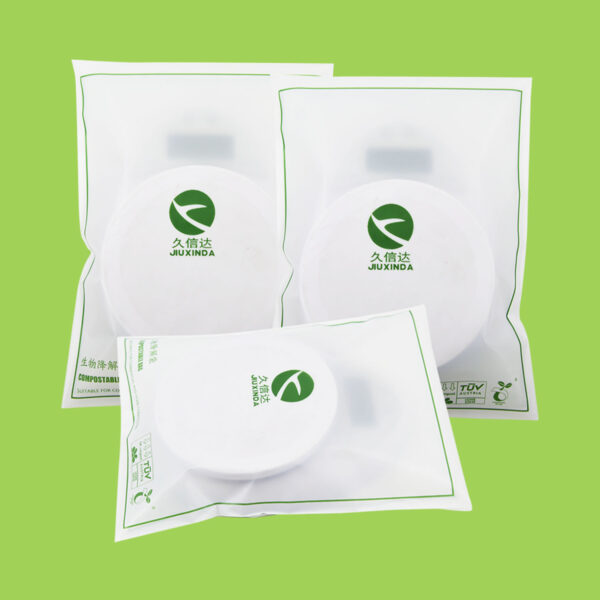As environmental concerns grow, businesses and consumers are looking for eco-friendly alternatives to traditional plastic packaging. Two terms often encountered in this discussion are “compostable” and “biodegradable” packaging bags. While they both suggest sustainability and reduced environmental impact, these terms are not interchangeable. In fact, there are significant differences between compostable and biodegradable packaging bags, especially when it comes to how they decompose, the conditions required for decomposition, and the potential environmental benefits.
Contents
Biodegradable Packaging Bags: What Does It Mean?
Biodegradable packaging refers to materials that can break down naturally through the actions of microorganisms like bacteria, fungi, and algae. When exposed to the right environment—such as moisture, oxygen, and the presence of microbes—biodegradable bags will eventually decompose into natural elements such as water, carbon dioxide, and biomass. However, this process is not always rapid or environmentally benign.
One of the key misconceptions about biodegradable packaging is that it will degrade anywhere and under any conditions. In reality, many biodegradable plastics, particularly those derived from fossil fuels, require specific conditions, such as high temperatures found in industrial composting facilities, to fully break down. If these items end up in landfills or oceans, they may persist for years, causing environmental harm similar to traditional plastics. Additionally, some biodegradable plastics may leave behind toxic residues or microplastics, which can have negative effects on ecosystems.

Compostable Packaging Bags: A Step Further
Compostable packaging bags, on the other hand, are designed to break down in composting environments—whether industrial or home composts—without leaving behind toxic materials. To be classified as compostable, packaging must meet specific standards, such as the ASTM D6400 or EN 13432, which ensure that the material decomposes within a certain time frame (usually within 90 days) and leaves behind nutrient-rich compost, rather than harmful residues.
Compostable packaging is typically made from plant-based materials such as corn starch, sugarcane, or other renewable resources. This ensures that as the material breaks down, it adds value to the soil by contributing nutrients. Unlike some biodegradable plastics, compostable bags do not require high temperatures to decompose, making them suitable for both home and industrial composting systems. However, they still require certain conditions, such as consistent moisture and oxygen, to decompose properly.

Key Differences Between Biodegradable and Compostable Packaging
Breakdown Process
Biodegradable bags
Can break down in a variety of environments, but this process may take years and sometimes requires industrial conditions. Some biodegradable bags may leave behind microplastics or toxic substances.
Compostable bags
Are designed to break down fully within a set time frame, leaving behind nutrient-rich compost with no harmful residues. They require specific composting conditions but do so in a shorter period.
Materials
Biodegradable bags
May be made from fossil fuel-based plastics (such as certain types of biodegradable polyesters) or from natural materials.
Compostable bags
Are typically made from organic, renewable resources such as corn starch or sugarcane, which further benefits the environment.
End Result
Biodegradable bags
Break down into water, carbon dioxide, and biomass, but may leave harmful microplastics or toxins in certain cases.
Compostable bags
Break down into water, carbon dioxide, and nutrient-rich compost, contributing to soil health and ecosystem balance.
Environmental Impact
Biodegradable bags
While better than traditional plastics, they may still contribute to pollution if they break down incompletely or if they end up in environments like oceans where the breakdown process is significantly slowed.
Compostable bags
Offer a more environmentally friendly option as they provide a useful end product (compost) and break down more completely.
Which Is Better for the Environment?
Both biodegradable and compostable packaging options offer advantages over traditional plastic bags, which can take centuries to decompose and often lead to severe environmental pollution. However, compostable bags generally have a clearer environmental benefit due to their ability to break down more fully and contribute positively to the soil. The composting process not only avoids the potential for microplastics but also supports the circular economy by turning waste into a valuable resource.
Biodegradable packaging, on the other hand, can still be a viable option in certain circumstances, but it requires careful disposal and sometimes industrial facilities to ensure that it degrades properly without leaving harmful residues. For consumers and businesses looking to make a significant impact, compostable packaging is often the preferable choice, as it guarantees a cleaner, more complete breakdown process.
Conclusion
While both compostable and biodegradable packaging bags are designed to reduce the environmental footprint of traditional plastics, they are not the same. Biodegradable bags can break down in a range of environments, but they may still leave harmful residues and require specific conditions for proper degradation. Compostable bags, on the other hand, are designed to break down fully in a composting environment, offering a more sustainable, eco-friendly option that contributes to soil health. When considering packaging options, understanding these distinctions is key to making informed, environmentally responsible choices.

